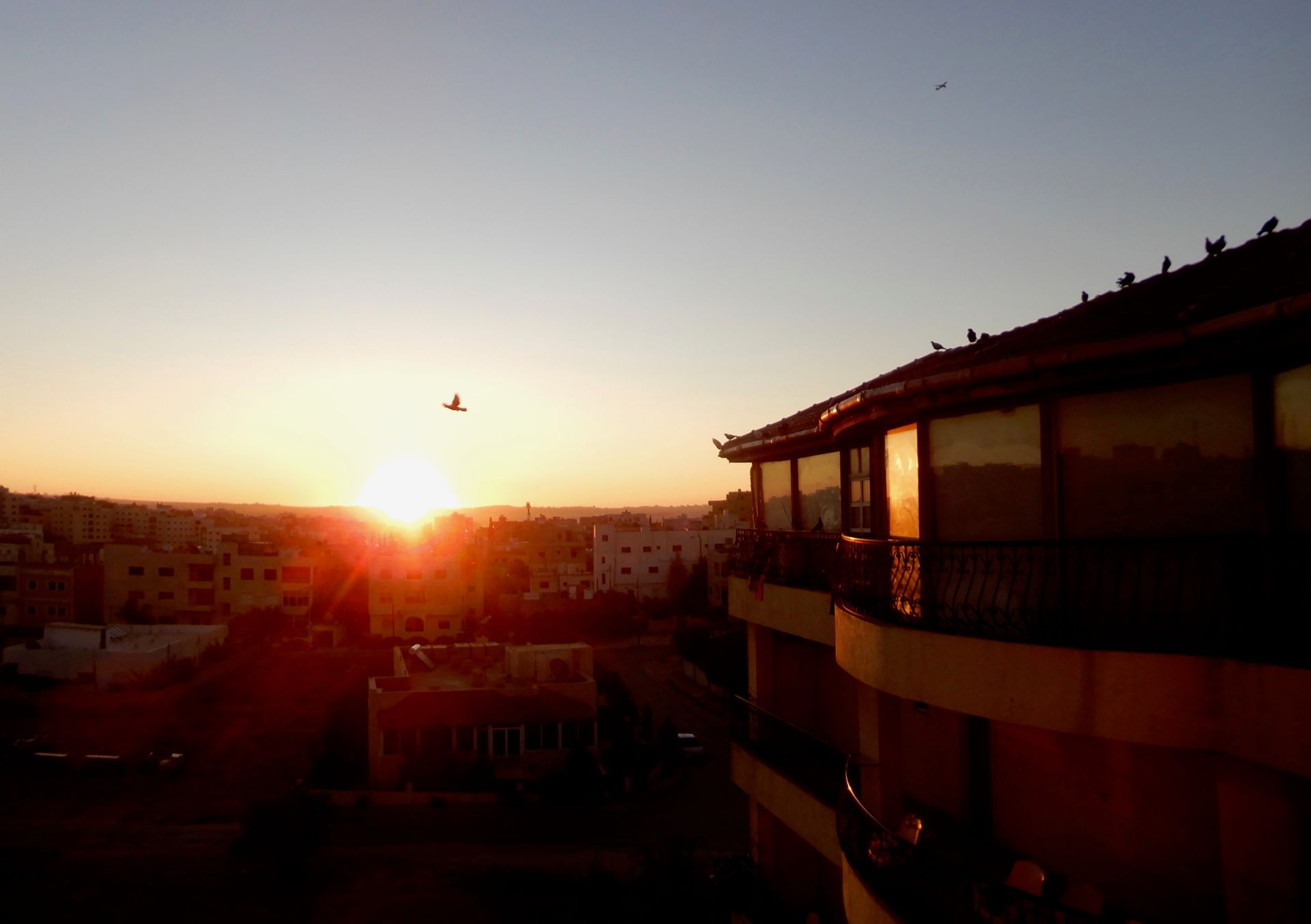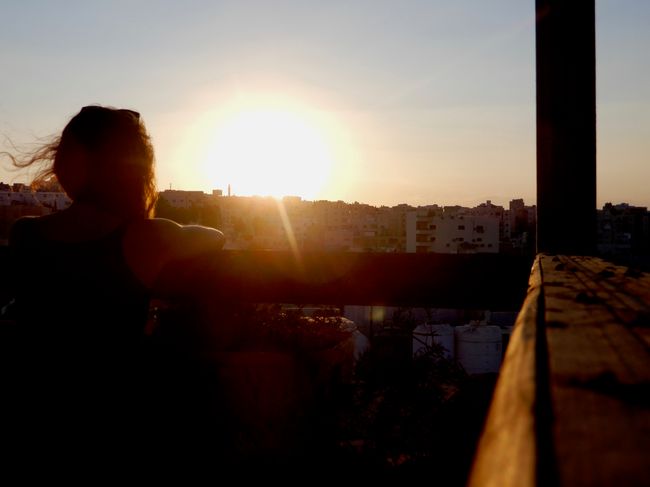Travel to Jerusalem
Published: 26.12.2019
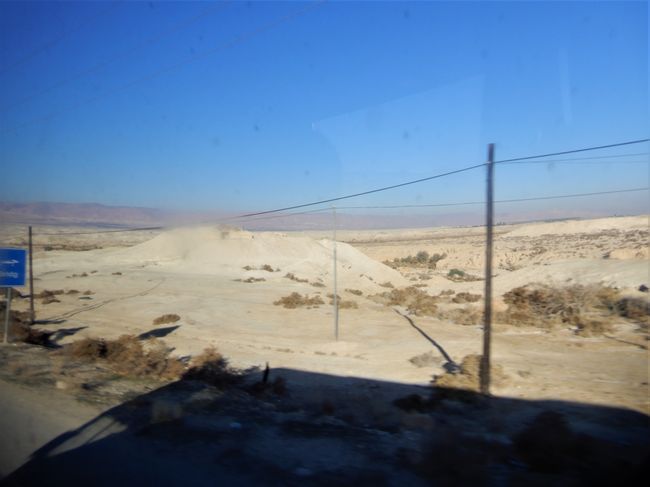
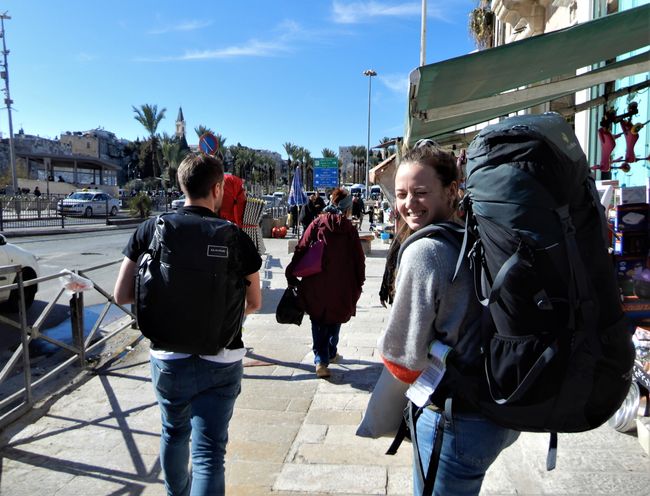
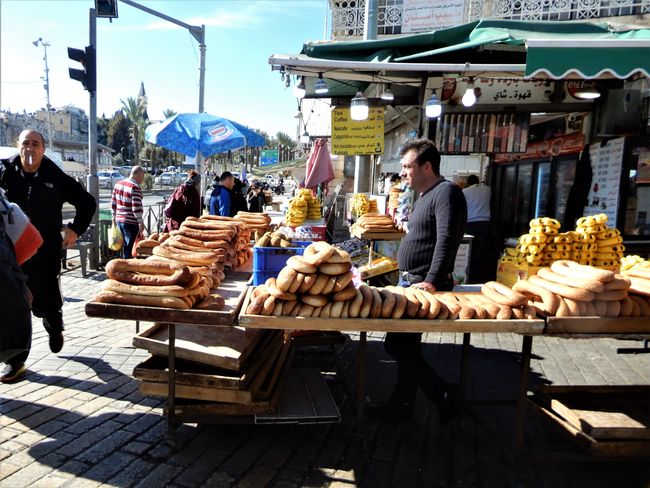
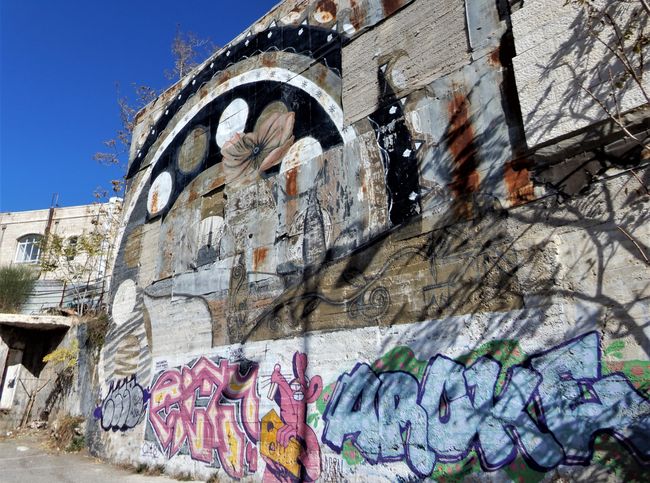
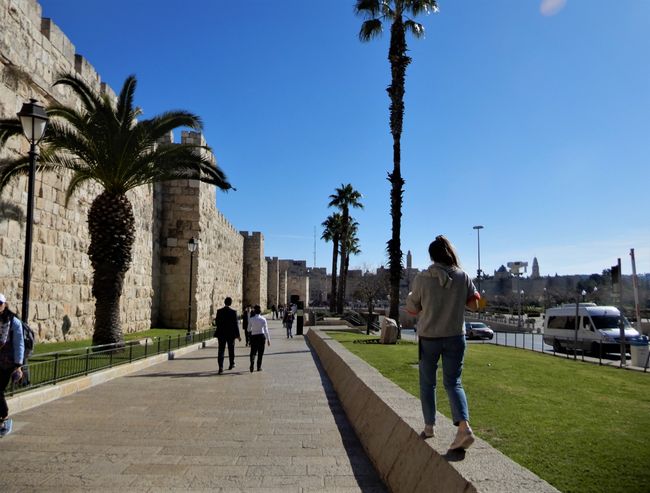
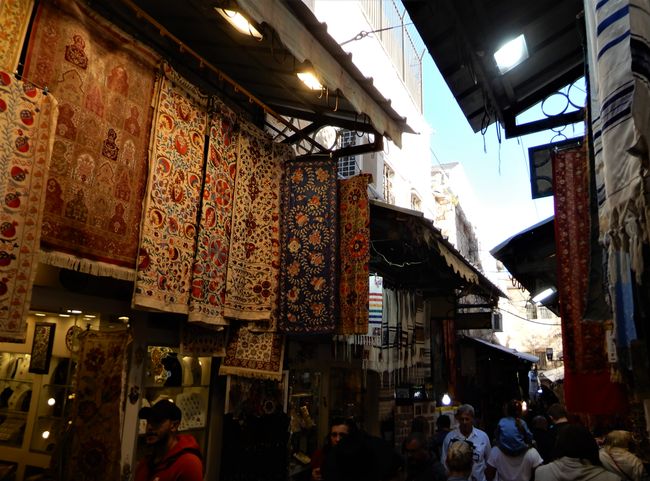
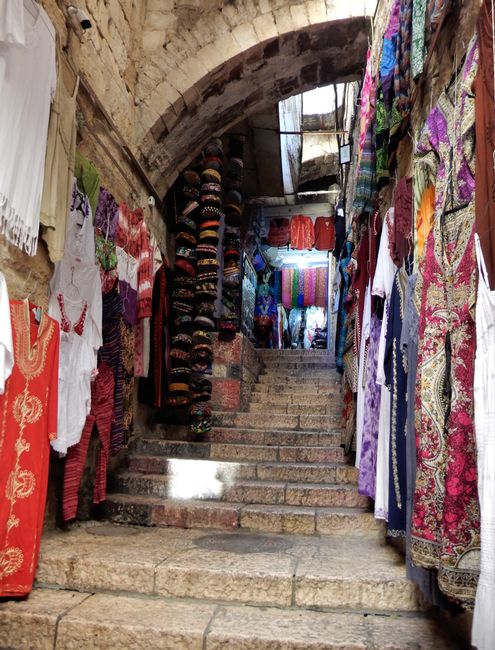
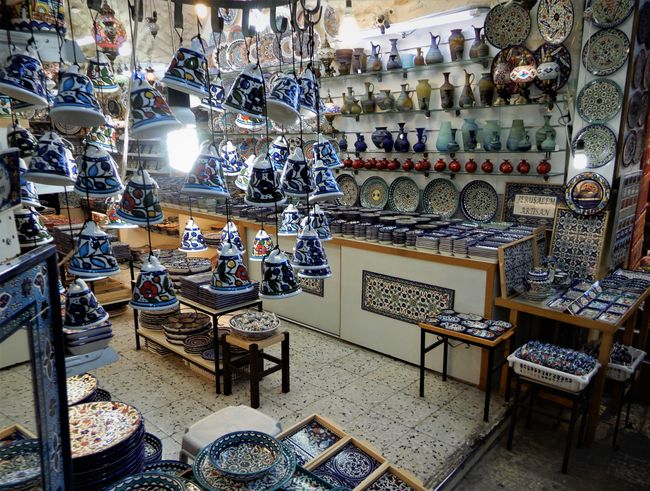
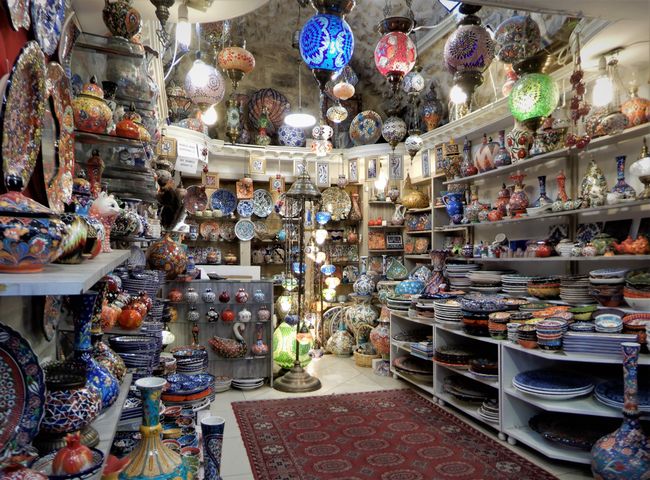
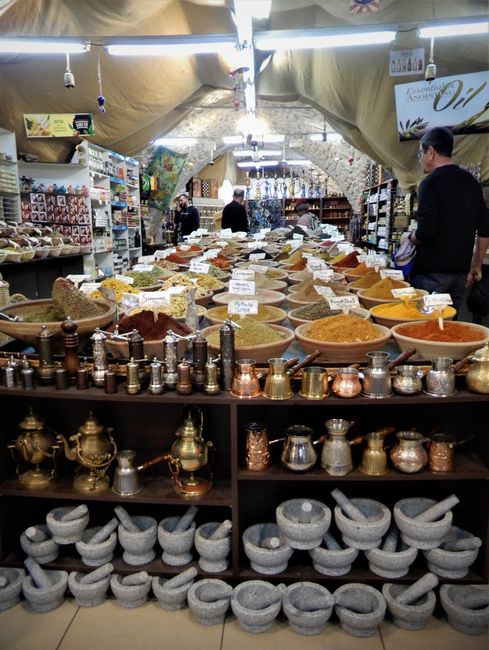
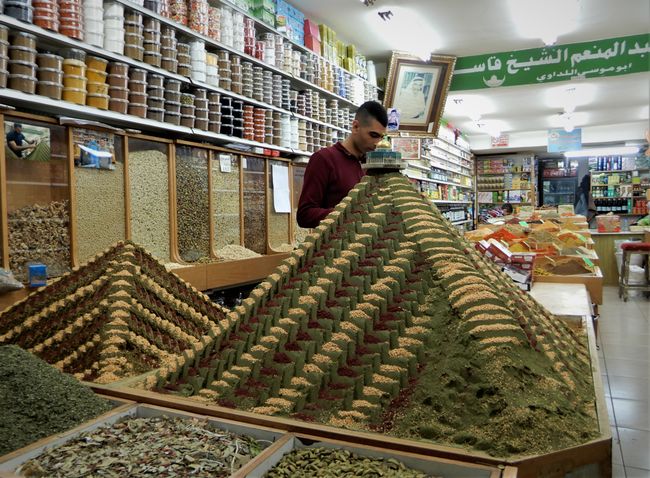
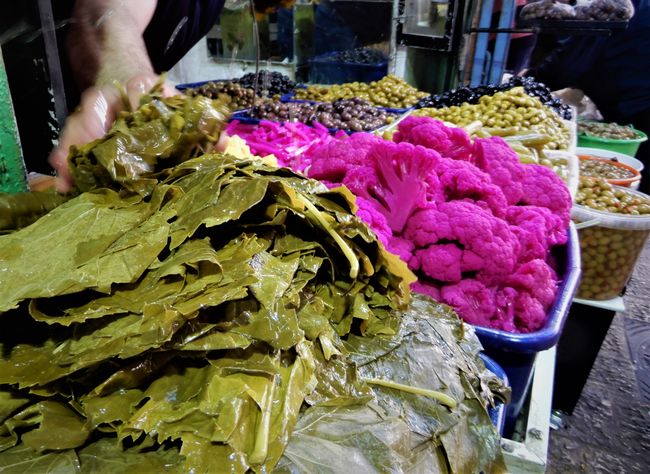
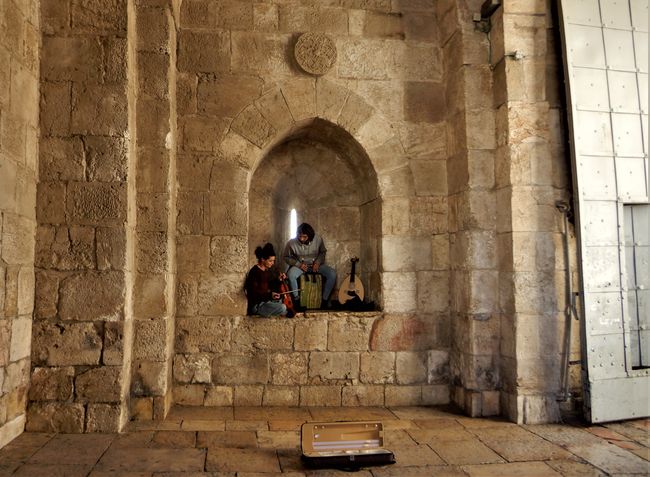
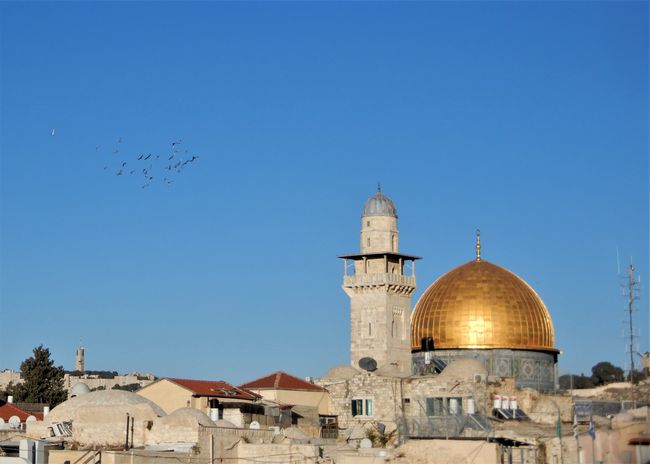
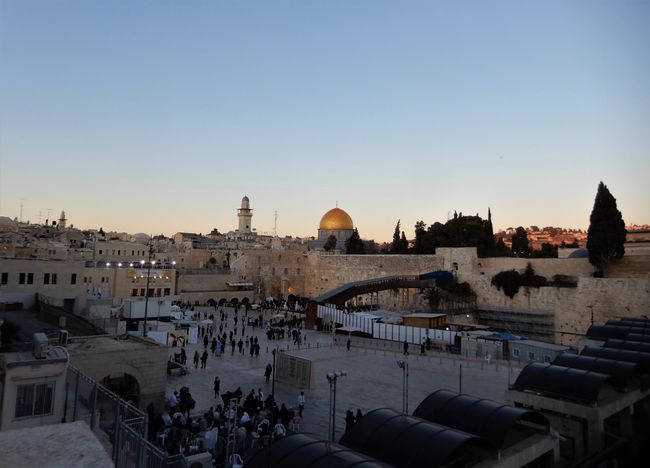
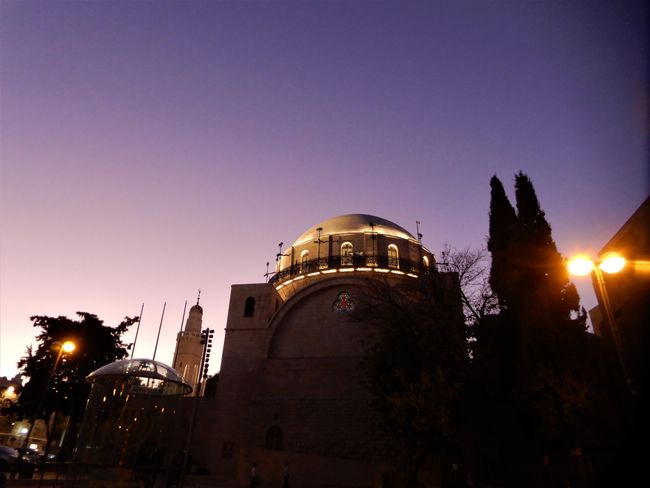

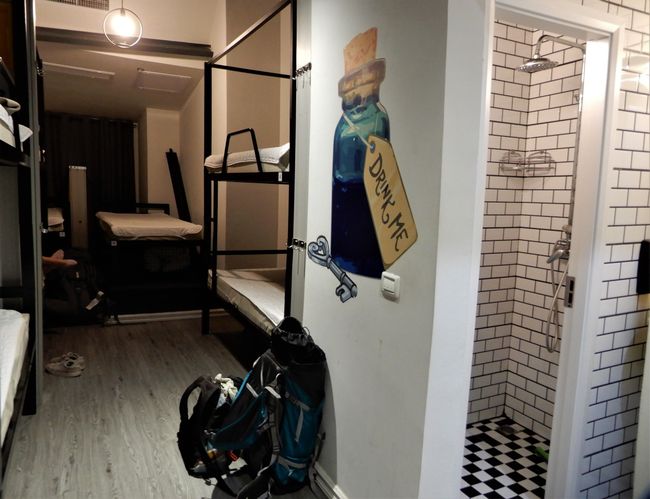
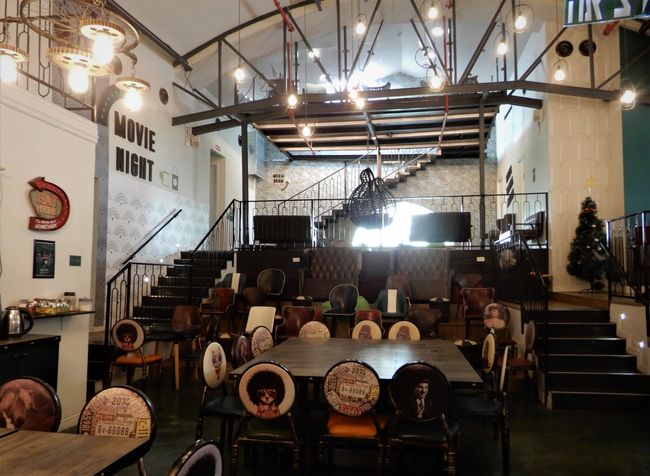
Subscribe to Newsletter
Friday + Saturday, December 20th + 21st
9 am. Today we sleep in and then have a last big breakfast together with Ramo. Then we head downtown to take care of a few things: printing photos, getting Hanni's pants tailored (after about half an hour of wrong directions, as usual, we finally find the tailor who quickly and for only one dinar completes the requested alteration), getting spices from the market, and then I take Hanni and Ramo to the Friday Market. Very successful: we find three pairs of shoes and a pair of pants at a reasonable price. In the evening, we have a final evening program for Ramo: Shisha in Weibdeh, then the best falafel in town at Paris Square, then a drink on Rainbow Street, and then packing & saying goodbye. Yalla, bye Ramo! Tomorrow Hanni and I are going to Jerusalem.
5:30 am. Hanni and I finish packing our last few items and head out onto the deserted streets, where a taxi takes us safely and punctually to the bus stop. It only takes one hour for us to reach the border to Israel at the King Hussein Bridge with the Jet Bus. Once there, we get off the bus with all our luggage, pay the Jordanian exit fee, and hand over our passports. While we wait in the waiting area on rickety metal chairs, we meet Radek and Ian, two young Czechs who are also traveling to Jerusalem and help pass the time.
Then a border officer appears with our passports and waves for us to follow him. So we pack everything back onto the bus, which now drives to the Israeli side. I'm curious - I've heard various stories about the border there. Waiting times that last a whole day, baggage being thoroughly searched, hours of questioning about our stay in Israel. Let's see what awaits us now.
First, we pass through the no man's land between the Jordanian and Israeli borders. Wide sand dunes tower over a barren landscape, as if a giant had played in a sandpit. When we arrive at the Israeli border, we once again disembark with all our belongings and line up. After the security check, comes the moment of truth. Hanni and I are waved over to the border officer and hand the young man our passports. He addresses us by our names and asks if we are traveling to Jerusalem for the first time and which places we will visit. Then he asks Hanni what her father's name is. Hanni hesitates for a moment, unsure if he means her first or last name, but I don't dare to intervene. He clearly said "Hannah". However, the officer is patient and asks her for the names and birthplaces of our mother as well, and then that's it - "Enjoy your stay!", he says with a smile and hands us back our passports with the visa.
I still can't believe we made it so easily and quickly. After withdrawing some money (we now have to get used to Israeli shekels instead of Jordanian dinars), we meet Radek and Ian outside the building, who have also successfully received their visas, and we all get on a shuttle bus heading to Jerusalem. With an Arab driver - today on Shabbat, we probably won't see any Jewish people working. The driver stops at a checkpoint just before Jerusalem. A very young, heavily armed soldier enters the bus. She looks from left to right down the rows and then stops in front of the last row where Hanni and I are sitting. She wants to see our passports. Her face has a poker face that is impossible to interpret. But everything seems to be fine. We receive our passports back, she gets off the bus, and we continue on to Jerusalem without any further stops, straight to Damascus Gate.
Our driver kicks us out of his shuttle bus, and we realize that our hostel is right next to the apartment that Radek and Ian booked. So we start our 20-minute walk together. With beautiful sunshine and summer temperatures, we reach our hostel, which is really close to the Old City, and where we can leave our luggage. Then Hanni and I set off for the Old City. At 2 o'clock, a Free Walking Tour is said to start at Jaffa Gate, as we have been told at the hostel. So we enter the Old City from there and still have about two hours to explore the city on our own before the tour starts. We immerse ourselves in the narrow alleyways and are amazed. The path is only about two meters wide, with shops lined up on both sides, offering a huge selection of products. Scarves, clothing, porcelain, jewelry, leather and pottery goods, bags, candles - just everything. Many of the products are familiar to me from souvenir shops in Amman.
We continue down the alley, which seems endless, and numerous side alleys branch off, also filled with small shops. It is really impossible to grasp the mass of offerings here. Colorful and glittering beauty as far as the eye can see. After wandering through the alleys for a while, we accidentally end up at Damascus Gate again (it is still impossible for us to keep our bearings in the winding streets), where we sit down with a coffee and let the midday sun shine on our faces, and then we make our way to Jaffa Gate, where we arrive on time at 2 o'clock. Four different tour guides start from here, and we are assigned to Tania, who will tell us more about the Old City of Jerusalem.
On a map, she shows us that the Old City is divided into four parts: a Muslim part, a Jewish part, a Christian part, and an Armenian part. Now it also makes sense to me that the shops in the alleys we walked through before seemed so familiar - we were in the Muslim part. She tells us how the Armenian part came about (a wise and wealthy Armenian woman who was married to a ruler of Jerusalem had bought a part of Jerusalem at that time), and why the houses in the Jewish quarter are the most modern: When Jerusalem was partially occupied by Jordan in the last century, the Jewish part was completely destroyed and only rebuilt when Israel recaptured all of Jerusalem in the Six-Day War in 1967.
It is not only because of Shabbat that we see many Jewish people here today in their traditional clothing: men in black suits, black hats (top hats or barrel-shaped fur hats), sidelocks and white fringes hanging out from under their jackets. Women mostly dressed in black or gray (black being the color of modesty) with headscarves, turbans, or wigs. Ultra-Orthodox and Orthodox Jewish women and men openly practice their religion here day by day.
We reach a point from which we can see the Western Wall (which is never called the Wailing Wall by Jews - for them, it is the Western Wall or simply the Wall), behind which the black dome of the Al-Aqsa Mosque and the large golden dome of the Dome of the Rock stand out. Tania gives us a brief overview of why this place here is so special and so fraught with conflict. The Temple Mount, on which these buildings are located, is the holiest place for Jewish people. According to their belief, the world was created here, with the Jerusalem Temple as its center. The Western Wall was one of the enclosing walls of the Temple and is now considered the most important holy site of Judaism because it is closest to the former Temple. For Muslims, on the other hand, Mohammed began his ascent to heaven from this place, which is why the Dome of the Rock shrine and the Al-Aqsa Mosque, the third holiest mosque in the world, are located here. It is quite clear that true peace can never be achieved around this focal point here.
After the tour, Hanni and I take another look at the uniquely beautiful golden dome of the Dome of the Rock at sunset and move a little closer to the Western Wall, where many Jewish people (men in a larger area on the left, women in a smaller area on the right) are standing and praying. Many are also sitting in front of the wall with a plastic chair and a small wooden table, which are available in abundance here, studying the Torah. Similar to Jordan, where it is also part of everyday life to see Muslims praying multiple times a day in public with their prayer rugs, the public expression of religion is completely normal here as well.
Now Hanni and I are slowly making our way back, checking into the hotel (apparently we are all alone in our 8-bed room tonight), resting a bit, and trying to absorb everything we have seen and heard. But this process will probably take a bit longer. Later, we go out for a beer with Ian and Radek. Enough for today.
Subscribe to Newsletter
Answer
